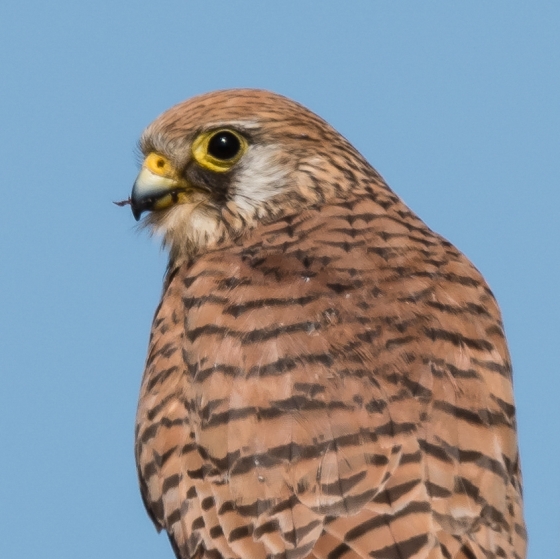Lesser Kestrel

Introduction
Slightly smaller than our Kestrel, and less spotted, the male Lesser Kestrel has blue-grey upper-parts. This is a very rare visitor from southern Europe, where it breeds in small colonies.

Key Stats
Status and Trends
Conservation Status
Population Size
Population Change
Population trends of this scarce species are not routinely monitored.
Distribution
This vagrant is too rarely reported to map distribution.
European Distribution Map
Distribution Change
This vagrant is too rarely reported to map distribution change.
Seasonality
This species has been too rarely reported to BirdTrack during 2011–22 to properly assess seasonality.
Movement
Britain & Ireland movement
European movements
EuroBirdPortal uses birdwatcher's records, such as those logged in BirdTrack to map the flows of birds as they arrive and depart Europe. See maps for this species here.
The Eurasian-African Migration Atlas shows movements of individual birds ringed or recovered in Europe. See maps for this species here.
Biology
Survival and Longevity
Survival is shown as the proportion of birds surviving from one year to the next and is derived from bird ringing data. It can also be used to estimate how long birds typically live.
Classification, names and codes
Classification and Codes
- Order: Falconiformes
- Family: Falconidae
- Scientific name: Falco naumanni
- Authority: Fleischer, 1818
- BTO 5-letter code: LESKE
- Euring code number: 3030
Alternate species names
- Catalan: xoriguer petit
- Czech: poštolka jižní
- Danish: Lille Tårnfalk
- Dutch: Kleine Torenvalk
- Estonian: stepi-tuuletallaja
- Finnish: pikkutuulihaukka
- French: Faucon crécerellette
- German: Rötelfalke
- Hungarian: fehérkarmú vércse
- Icelandic: Kliðfálki
- Irish: Mionphocaire Gaoithe
- Italian: Grillaio
- Latvian: mazais piekuns
- Lithuanian: stepinis pelesakalis
- Norwegian: Rødfalk
- Polish: pustuleczka
- Portuguese: francelho
- Slovak: sokol bielopazúravý
- Slovenian: južna postovka
- Spanish: Cernícalo primilla
- Swedish: rödfalk

